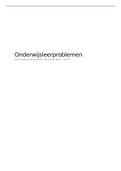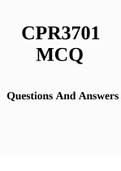Samenvatting
O&E summary all 12 Chapters of the book, Lectures , 4 Articles 2 Q&A's
- Instelling
- Radboud Universiteit Nijmegen (RU)
- Boek
- Strategy Safari
Author completed the exam with an 7,5! This document is a summary of everything that has been discussed during the course Organization and Environment, including the articles. It includes everything of the lectures and the articles. Everything is exam material. The author of this document attended...
[Meer zien]














